Buoyed by winning hosting rights for the 2032 Olympics, Brisbane has reinvented itself as a vibrant tourist destination with waterfront dining, microbreweries and chic rooftop bars to complement an ever-improving golf line-up.
When it comes to self-promotion, Brisbane appears least likely among Australia’s three east coast capital cities to engage in one-upmanship. Melbourne has long boasted of being the nation’s gastronomical capital with its trendy cafés, stylish restaurants and renowned chefs. Sydney has relished its reputation as the emerald city with stunning waterways and world-famous icons such as Bondi Beach, the Opera House and Harbour Bridge.
Brisbane tended to promote itself as Australia’s nature capital. Within an hour’s drive, tourists could sunbake on white sandy beaches or head inland for mountain escapes and hiking in ancient rainforests.

a Christmas decoration.
But in the past few years Brisbane has reinvented itself as a vibrant tourist destination with waterfront dining, microbreweries and chic rooftop bars. It’s hard to imagine that prior to World Expo ’88, restaurants in the city weren’t allowed to serve food outdoors.
The Queensland capital appears increasingly comfortable forging its own unique style. No doubt buoyed by confidence gleaned from winning hosting rights for the 2032 Olympic Games, Brisbane is basking in its newly acquired international fame.
The urban fringe is flush with open-air dining and entertainment hubs: Howard Smith Wharves, South Bank, Fish Lane (South Brisbane), Eat Street Northshore, James Street (Fortitude Valley) and Brisbane City.
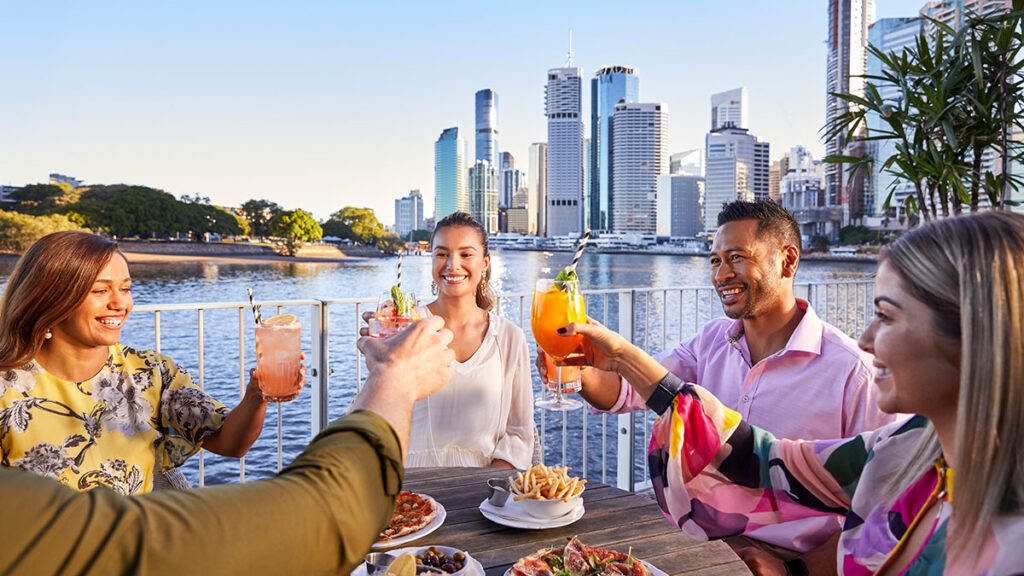
WATERFRONT DINING TAKES OFF
The River City certainly has a great tale to tell with several new dining precincts. Howard Smith Wharves beneath the northern pylon of the iconic Story Bridge has been transformed into a lively entertainment strip. The site’s abandoned shipping wharves were restored in 2018 and it’s now been dubbed ‘The Beating Heart Of Brisbane’s Entertainment Scene’ with 13 restaurants, bars, open spaces and Crystalbrook Vincent hotel. Highly recommended is Greca Restaurant, a contemporary Greek taverna famous for large share plates of Mediterranean classics. Felons Brewing is a perfect watering hole to celebrate a twilight bridge climb. It can accommodate up to 3,500 patrons and the atmosphere resembles a Bavarian beer hall during Oktoberfest. Thoroughly recommended is the Felons Brewing tasting palette of four craft beers, including an award-winning Belgian-style lager with 13 percent alcohol.
The $3.6 billion Queen’s Wharf Brisbane is taking shape with a staged opening from April 2024. Brisbane’s only casino will relocate from the Treasury building to The Star Brisbane. The precinct will feature four new luxury hotels and more than 50 food and beverage outlets across 12 hectares. The SkyDeck – towering 100 metres above the river – and the open-air Leisure Deck are set to become landmark Brisbane attractions.
The CBD is being given a new lease of life with the redevelopment of the dated Eagle Street Pier. Dexus’ $2 billion Waterfront Brisbane includes two office towers, retail, dining and a refurbished riverwalk. Tillerman Seafood Restaurant has become one of Brisbane’s favourite eateries and the European-influenced menu specialises in premium local seafood: freshly shucked oysters, Moreton Bay bugs and the legendary French stew bouillabaisse.
Another new inner-city precinct is South/City/SQ at Woolloongabba, a master-planned, mixed-use development surrounding the Brisbane cricket ground. (Attractions include Casa Chow, South City Wine Bar, Sassa Italiano and The Wright House brewpub.)
Rivermakers business park at Morningside in Brisbane’s east has been transformed from a former smallgoods factory into a stylish lifestyle hub (Bavay Distillery, Low n Slow Meat Co, Mas & Miek Ceramic House and Revel Brewing Co).
West Village by Sekisui House in Brisbane’s West End combines retail shops, commercial space and lavish apartments with heritage buildings (Metro Arts Theatre, SOAK Bathhouse and Yamas Greek Restaurant).
Portside Wharf in Hamilton was the city’s commercial cruise terminal before being replaced by the $750 million Brisbane International Cruise Terminal to accommodate large passenger ships up to 270 metres in length. Portside Wharf has since been redeveloped into a contemporary apartment/dining precinct just two kilometres from Royal Queensland. The riverside location markets itself as the village by the water. Fosh Bar + Restaurant is an exquisite new addition by second-generation restaurateur Michael Tassis whose father established George’s Paragon Seafood Restaurant at Sanctuary Cove. Fosh ‘re-imagines modern Australian seafood’ that is line-caught and served within 24 hours.

Apart from the Story Bridge Adventure Climb, Brisbane has plenty of epic experiences. Riverlife Adventure Centre provides equipment to kayak along the Brisbane River, abseil down Kangaroo Point Cliffs and cycle along the foreshore. River To Bay operates charter boats from which to explore natural wonders and marine life between Brisbane and Moreton Bay. Hop On Brewery Tours provide the opportunity to sample a wide selection of craft beers and meet their makers. City Winery Brisbane is an urban micro winery, bar and restaurant that has wine-blending workshops and cellar-door tastings.
New transport infrastructure around the Brisbane River is pivotal to the city’s makeover. Neville Bonner Bridge will be a pedestrian walkway connecting Queen’s Wharf Brisbane with South Bank’s cultural precinct when it opens in late 2023. Kangaroo Point Green Bridge links the inner-south with the CBD and will be home to two new dining destinations. The rapid-transit Brisbane Metro will have buses travelling through the CBD every three minutes at peak hour. And the Cross River Rail traverses the Brisbane River, stretching 10 kilometres from Dutton Park to Bowen Hills.

A REJUVENATED GOLF SCENE
Sporting events are playing their part in Brisbane’s boom. The NRL’s Magic Round (when all 16 clubs venture to Brisbane for a three-day showdown) is a huge drawcard for locals and visitors, while the Fortinet Australian PGA Championship at Royal Queensland is set to lure golf fans from across Australia from November 23-26.
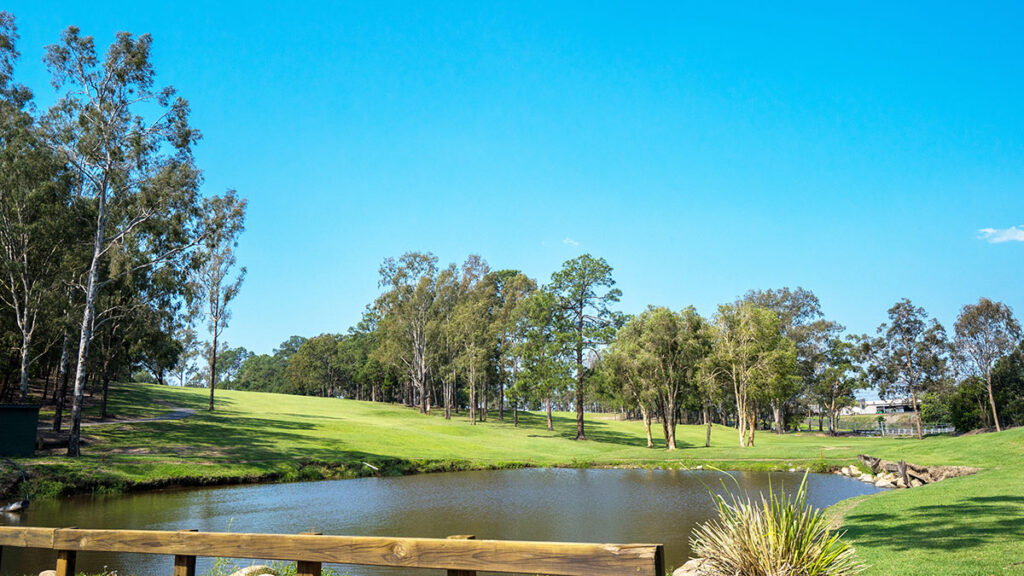
Brisbane used to rank a distant third behind the Gold and Sunshine coasts as a golf destination in south-east Queensland. Intrepid golfers had to visit Springfield on the city’s south-western outskirts to discover a world-class layout, Brookwater Golf & Country Club designed by Greg Norman and Bob Harrison. Gailes Golf Club, host of the 1955 Australian Open won by Bobby Locke, is marginally closer at Wacol.
Today, golfers need not leave the city centre after a number of course refurbishments on the urban fringe. Royal Queensland Golf Club was languishing at No.62 on Australia’s Top 100 Golf Courses when Brookwater opened in 2002. The duplication of Brisbane’s Gateway Bridge forced an acquisition of club land for the freeway expansion. Out of necessity, Royal Queensland commissioned Mike Clayton to re-route the Carnegie Clark layout. Clayton’s trademark design emphasises strategy from the tee with the reward of better approach angles. The makeover has been an undisputed success and the new-look RQ will be on display again when Cameron Smith defends his Australian PGA title. The Eagle Farm course is now ranked 29th and has usurped Brookwater (34th) to become the favoured venue to host golf at the 2032 Brisbane Olympics.
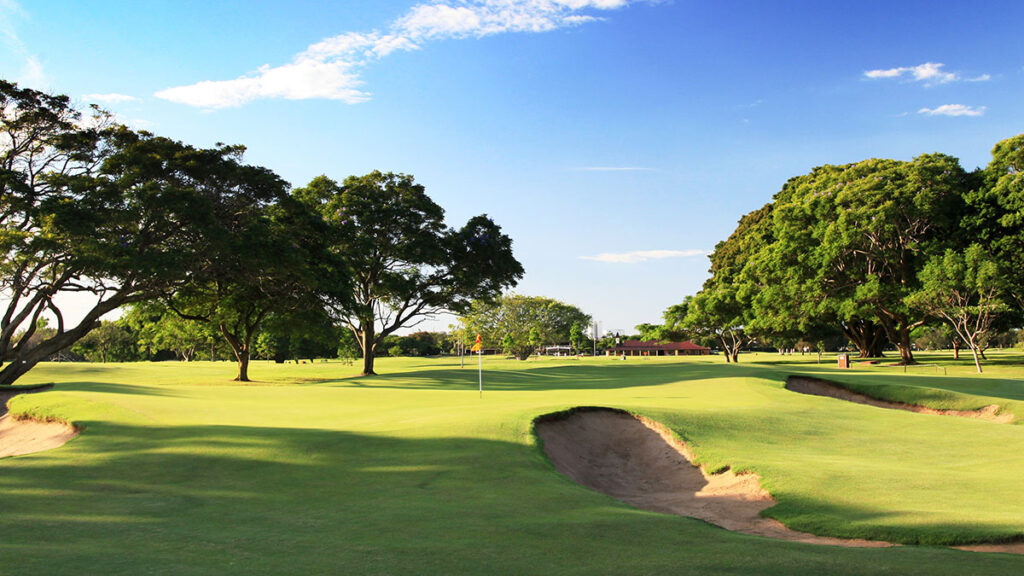
Just three kilometres south of Royal Queensland and the Brisbane River, Minnippi Golf & Range is the new kid in town after its official opening in September. The 18-hole layout at Cannon Hill came to fruition after Brisbane City Council funded its construction to replace the Victoria Park public course in Kelvin Grove that was turned into parklands.
Phil Ryan and Paul Reeves of Pacific Coast Design chose an unusual concept at the first public golf course built in Brisbane for more than 70 years. Minnippi is without sand bunkers and the green surrounds feature grassy hollows with treated timber bunker walls made from recycled railway sleepers. Minnippi is envisaged to be much more than a golf facility with a relatively modest $45 green fee ($49 Friday-Sunday). Live bands, outdoor movies, Pilates classes and laser tag are some of the proposed non-golf activities at the facility adjacent to a five-stage residential development at Cannon Hill.
Brisbane Golf Club feels like a step back in time with its Queenslander-style clubhouse and interior decor. Towering gums, wide-canopied umbrella trees, blooming bouganvilleas and greenside ponds provide a distinctive look to the 6,105-metre parkland layout at Yeerongpilly, close to the banks of the Brisbane River. It’s the only golf course in Australia named after a state capital without a Royal prefix.
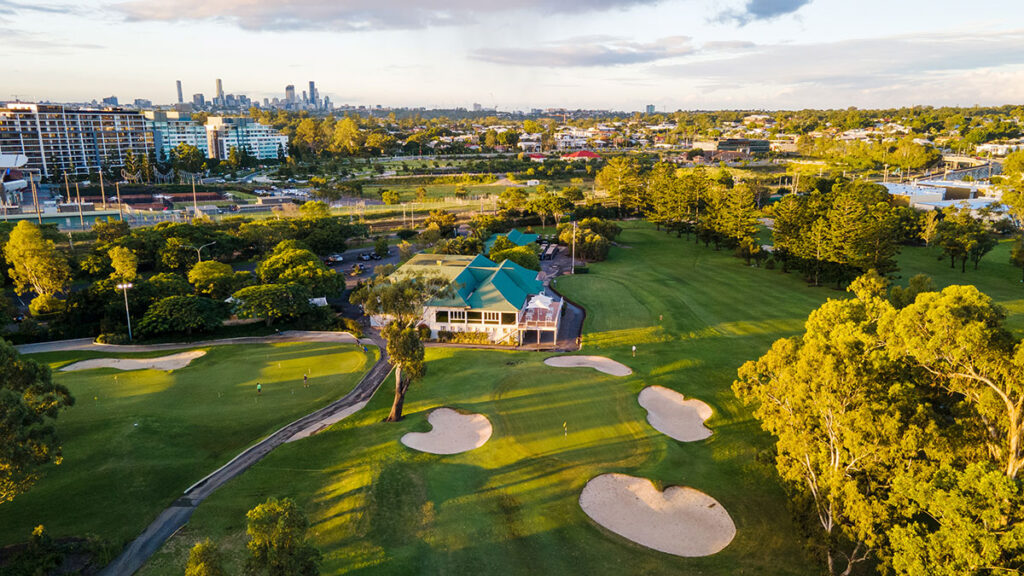
Brisbane is taking a proactive approach to enhance its already fine reputation. Crafter + Mogford Golf Strategies has been consulted about architectural improvements to the 21-hole layout. The club completely replaced its irrigation system to address conditioning concerns in 2021. And, the maintenance overhaul under new superintendent David Mason (from Melbourne’s Metropolitan Golf Club) has the aim of adding more of a ‘linksy’ element by lowering the height of mown playing surfaces.
Just five kilometres west of the CBD, Hillstone St Lucia is the type of golf facility that’s needed to grow the game of golf. Without members, St Lucia is purely public access with a relaxed dress code and social setting. For instance, golfers may take an Esky of craft beers from the well-stocked fridge outside the golf shop for a round on the forgiving layout (5,411 metres, par 69).
As the original home of Indooroopilly Golf Club, St Lucia boasts a visit by Dr Alister MacKenzie on Christmas Eve 1926 during his tour of the Antipodes. However, St Lucia was literally falling apart in 1986 when Jens Holland and his business partner Hans Pettersson acquired the lease to manage the clubhouse and all catering. (In 2017 the pair took over the golf-shop operations, however Brisbane City Council maintains the 18-hole layout that sees 69,000 rounds a year.)

Hillstone St Lucia is virtually a food-and-beverage venue with a public golf course tacked on the side. The Swedish-born team has pumped millions of dollars into restoring St Lucia’s clubhouse precinct: café, bar, restaurant, function rooms, kitchen and on-site bakery. The Hundred Acre dining area extends across five split levels such that post-round drinks won’t interfere with weddings and other functions. With a restaurant menu that serves herb-crusted beef carpaccio and steamed mussels in romesco, white wine and saffron, it’s little wonder Hillstone has been well received by the affluent St Lucia neighbourhood.
Holland and Pettersson are also responsible for the delightful mini-golf circuit that has 12 greens with four hole locations each. The circuit is popular all year round since the canopies of mature mango trees provide protection from Brisbane’s subtropical heat. Requiring little maintenance, Hillstone St Lucia’s mini golf is a great return on the million-dollar investment with some 40,000 rounds a year ($15 adult, $12 child).
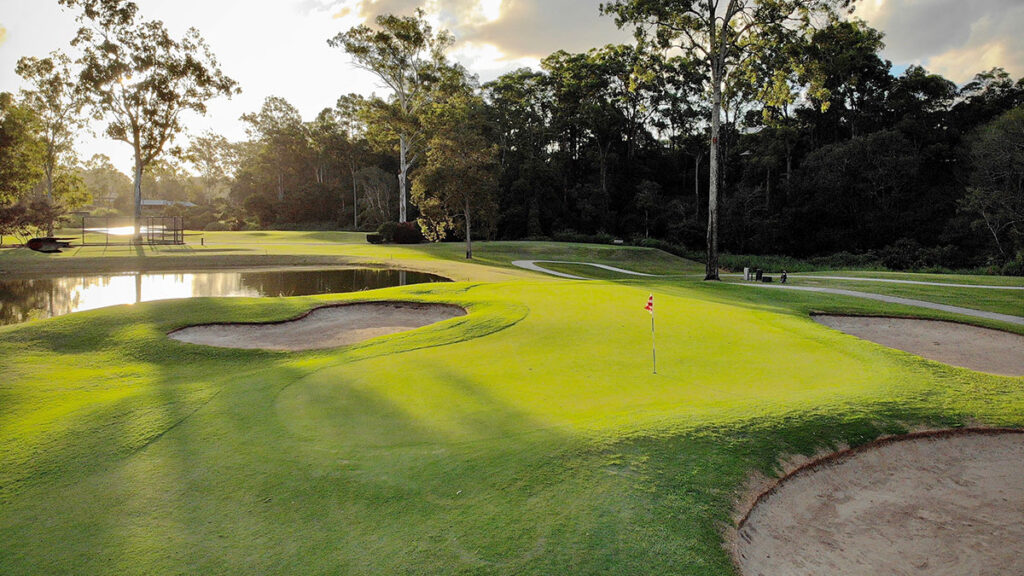
Twenty minutes north-west of the CBD, Keperra Country Golf Club is worthy of a visit given it hosts one of the most prestigious events on the amateur calendar. The Keperra Bowl is a 72-hole strokeplay tournament for males and females that attracts international entrants as a World Amateur Golf Ranking event. Keperra has funded recent infrastructure projects, too. The club constructed a six-hole short course as a practice area and learning facility for juniors where green complexes have been designed to USGA specifications. The 27-hole facility also installed a 30-megalitre dam that has assisted significantly with irrigation and course presentation. And a full redesign of its 22nd hole includes an improved bunkering system.
With so much development being undertaken across Brisbane, golfers can get an early taste of what international visitors will experience when the Olympics roll around in 2032.

